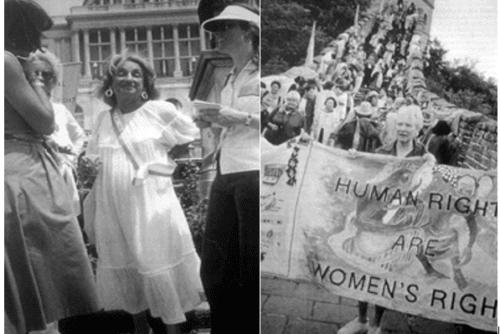In both the United States and France, the image of Josephine Baker endures: from a bronze simply entitled Joséphine in a small regional museum to her invisible yet omnipresent image in the Princesse Tam-Tam lingerie boutiques across France. Still images capturing Baker, even when included in films such as Princesse Tam Tam, remain problematic; while they often appear to glorify her beauty and talent, they also fix her image—fix her as an image—rather than as a producer of multiple, variant, mobile images, capable of using the medium to transform herself and transcend national, racial, and social boundaries. Representations of Baker by artists such as Paul Colin have led to readings (for example, by Henry Louis Gates Jr. and Karen C.C. Dalton) that risk confusing Josephine’s work with her image. Such readings focus on the representation of her performances rather than their performance history, the nature of her stages, her public, and her adaptability to different forms of performance media. Focusing on such artistic representations, even critically, we remain within the domain of what the literary theorist Homi Bhabha has identified as the photographic fixity of the colonial stereotype.
Admiring dancers’ images, focusing on how they look rather than what they do, we often forget the work that they do to create themselves—the work of creating images in movement. The cinema, Gilles Deleuze argues in L’image-mouvement, followed dancers in creating those moving images. Underneath their iconic images, the work of dancers is ignored or undervalued because it is invisible, or is not seen as work because it is indistinguishable from their art. Recent research in dance studies has explored how concert dance in the 1920s and 1930s took labor as its theme and identified itself with labor movements. Baker’s dancing, in this age of machines, is both mocking labor as entertainment and representing labor: she is the human motor, a hybrid dancing machine. Against the commodification of her labor or her image, she will also use that other dancing machine, the motion picture camera, the moteur cinematographique, to get beyond photographic fixity even while playing to colonial stereotypes.
In France in the 1920s and 1930s, Baker’s dancing was seen as at once liberating and pathological. In Paul Colin’s volume of lithographs, Le tumulte noir, and in the preface by Rip (satirist George Thenon), her movement images were read doubly, representing without contradiction what Petrine Archer-Straw has called “‘the primordial,’ with all the exotic notions that primitive innocence suggested,” as well as the “urban lifestyle” of “postwar modern man.” In Michel Leiris’s homage to Baker, she represents a spirit of freedom to be gained, ironically, through technological modernity, “an abandonment to animal joy while under the influence of modern rhythm” that brings with it the probable “insanity” of a fascination for comfort and progress, along with the aspiration to a “new life of impassioned frankness.” Leiris’s complex formulation of what jazz brought to Europe emphasizes its African religious or ritual roots and its American modernity; Josephine’s image would come to figure both. Leiris sets up the terms within which her Africanness as well as her Americanness would be measured: the postwar technological fantasy recovery from the technological trauma of the Great War; the pathology of the “dying civilization” in thrall to the Machine; the insanity of European war passing for the establishment of order; the violence of that order imposed by the machines of war and work; and the submission to the violent rhythms both of work and leisure typified in jazz.
Leiris makes clear that the popularity of La Revue Nègre—as well as its negative reception as a “contagion” or sickness—were far from innocent; that French culture projected onto African American dance forms its own pent-up passions as well as its anxieties, and that Baker’s “primitivism” was also an effect of a “decaying,” technologically fascinated, industrialized society. Although a limited European colonial imagination casts Africa as a utopia removed from an overly mechanized society, the broader imagination of French ethnographers such as Leiris, who were Baker’s contemporaries, gains a different perspective from working on African cultures that reconnect technology to ritual. From this perspective, Baker’s performances enact a recontextualization of African material that allows Europeans to see their own high-tech savagery. A reading of Baker’s performances in their French artistic and intellectual context may serve to emphasize her status as an object on exhibit. But it also allows an understanding of the way the components of her dancing—connecting her art to both African and American-inflected modernisms—bring it into direct relation with technology understood through both ritual and work, in African as well as American contexts.



